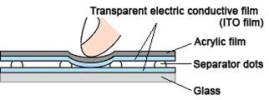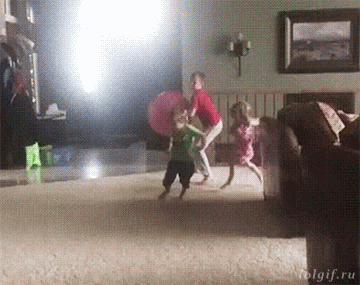Liquid Crystal Display (LCD) Monitors (Cont.)
A typical LCD includes rod-shaped molecules in a liquid that form a twisting helix that bends light entering the display, from either a light source behind the display or less often from reflected light. The rods straighten out when a current is applied and no longer bend the light. Since the liquid crystal material is between two screens polarized at 90 degrees, the light cannot pass through unless it is bent.
|
Touchscreen Monitors
There are a variety of ways to implement a touchscreen. For example, resistive touch is shown on the right side. |

|
Many tablets today use capacitive sensing as shown below. Since people are electrical conductors, if an insulator like glass is covered with a transparent conductor, touching distorts the electrostatic field of the screen, which results in a change in capacitance. This technology can allow multiple touches simultaneously, which allows gestures that can lead to attractive user interfaces.

|


|
|
What’s the last thing to go through a fly’s head as it hits the windshield of a car going 70 miles per hour? Its butt. |